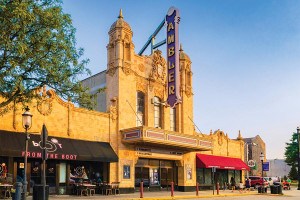Oh, Rats!
Admit it, you were morbidly fascinated by the story of the rat infestation at Green Eggs. And of course you clicked on that disgusting YouTube link.
But rats aren’t just in one restaurant, they’re all over the city. And readers have been asking: How do they get into a restaurant? How will the restaurant get rid of them once they’re in? And where do they live otherwise?
We talked to John DiDomenico from A.Amendt Pest Control. With 25 years experience as an exterminator, he knows his rats. DiDomenico said the broken sewer pipe explanation that Green Eggs gave was plausible, but rats have other ways of getting into homes and commercial establishments–including “climbing out of toilets.”
Once a business discovers it has a rat infestation, companies like DiDomenico’s can make the rats go somewhere else. The fee depends on the size of the property: For a restaurant the size of a McDonald’s (cool your jets, lawyers–we’re just using that as a size benchmark), the cost to remove the rats would be between $800 and $1,200.
A better alternative, DiDomenico said, is for restaurants to do whatever they can to prevent rodent infestations. This includes “making sure the building has no pipe openings and that door sweeps are tight, and not leaving food outside in trash bags, and of course, frequent trash removal.” He also explained that most newer buildings are required to have back flow preventers. That’s a flap that attaches to a sewer pipe that only lets fluid flow one way, out. DiDomenico said that some older buildings are “grandfathered” and don’t have back flow preventers, which makes them more accessible to rats. Rats also have a profound appreciation for historic buildings. (Nah, he didn’t really say that.)
A. Amendt only uses traps, not poison, for two reasons.
- 1. Poison doesn’t work. The rats can tell the difference between food and poison, and, says DiDomenico, “Why should they eat hamburger when they can have steak?”
2. Even if the poison worked, “You’d get dead rats, which can sometimes be hard to find.”
When they aren’t spending a fortnight in the pantry of your favorite restaurant, rats like dark, quiet places like sewers and abandoned buildings. They don’t wake up until after happy hour, at which time they come out and forage through the mountains of garbage humans provide to keep them fat and healthy.
If you want to hear more about rats, check out this Terry Gross interview with Robert Sullivan, author of Rats: Observations on the History and Habitat of the City’s Most Unwanted Inhabitants.


